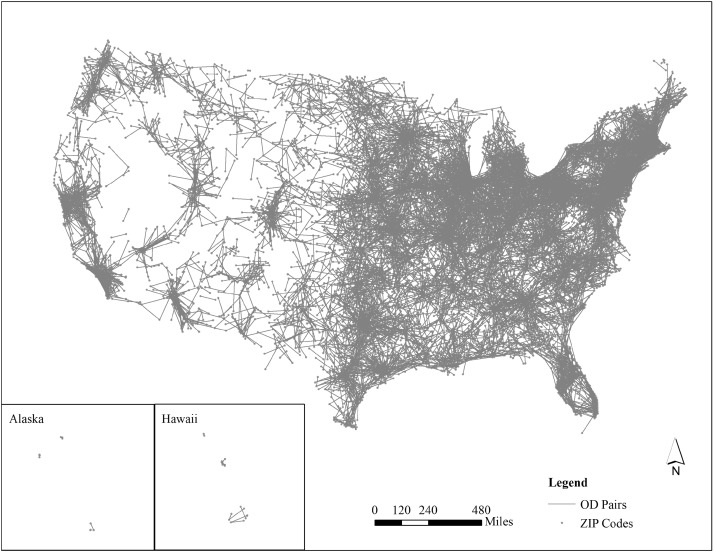
HU – Estimating a large drive time matrix between ZIP codes in the United States: A differential sampling approach
Yujie Hu, Changzhen Wang, Ruiyang Li, Fahui Wang
Article first published online: 15 JUN 2020 Journal of Transport Geography
DOI: 10.1016/j.jtrangeo.2020.102770
ABSTRACT: Estimating a massive drive time matrix between locations is a practical but challenging task. The challenges include availability of reliable road network (including traffic) data, programming expertise, and access to high-performance computing resources. This research proposes a method for estimating a nationwide drive time matrix between ZIP code areas in the U.S.—a geographic unit at which many national datasets including health information are compiled and distributed. The method (1) does not rely on intensive efforts in data preparation or access to advanced computing resources, (2) uses algorithms of varying complexity and computational time to estimate drive times of different trip lengths, and (3) accounts for both interzonal and intrazonal drive times. The core design samples ZIP code pairs with various intensities according to trip lengths and derives the drive times via Google Maps API, and the Google times are then used to adjust and improve some primitive estimates of drive times with low computational costs. The result provides a valuable resource for researchers.
Read the full publication at Journal of Transport Geography.